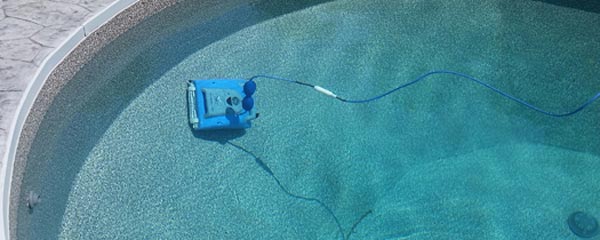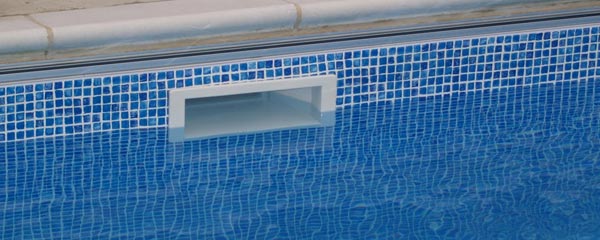With summer now in full swing, your swimming pool maintenance routine should be top of mind. We covered this process in a previous post:
How to Open Your Pool in 5 Easy Steps, which nicely outlines the basics of bidding winter farewell and getting your pool in top shape for another swim season.
Almost everyone relishes that preliminary legwork, as much for shaking off cold weather doldrums as for making their backyard vibrant once again. But for many, it’s actually in-season maintenance that tends to go overlooked, sometimes at a costly expense and the loss of valuable prime pool use. Getting into good habits of daily and weekly pool maintenance in spring and summer is just as important as mastering methods for winterizing and opening.
Take Stock of What Needs to be Done
Once you’ve made sure that your pool has survived the winter fully intact - Electrical components are working, any leaks and cracks have been repaired, water level and water chemistry are satisfactory, etc. Use your own experience to develop a recurring schedule of maintenance tasks and plan for how to maintain your pool. Every individual pool owner has specific variables that work into this equation, such as level of use, local weather patterns, and age of equipment, so learning from what worked well in the past, and the problems you encountered in previous seasons, should be foremost in your mind as you start this process. Typically, of course, there are tasks that need to be done a few times a week, some once a week, and others just monthly or periodically as needed. This requires a multi-level approach, one that some people simply don’t have the time or inclination to address on their own.
There are pool services that handle these exact situations, right? Why complicate your life when you can simply outsource these details to professionals? True, but the fact that you’re reading up on trends and products relevant to swimming pool maintenance is the first indication that you have a more proactive mindset, one that generally leads you to address issues, particularly those pertaining to a substantial investment you made in home entertainment, on your own rather than unloading them on someone else. While there are clearly situations and emergencies that call for professionals, the more accustomed you get to handle the basics of pool maintenance yourself, the more likely you are to make it a lifetime habit.
Daily Swimming Pool Maintenance
One of the worst things you can do as a pool owner is to take for granted the importance of swimming pool maintenance by failing to keep a regular eye on its condition. An excellent practice is to monitor it virtually every day in season, not just to look for problems but to gain an appreciation that daily upkeep is important. There are basic tasks that should be performed routinely:
- Removing Leaves and Debris: To keep your pool pristine and prevent clogging of your equipment, it's crucial to remove leaves and debris regularly. You can efficiently accomplish this using suction leaf canisters, leaf eaters or leaf nets and rakes.
- Inspecting Skimmer and Pump Baskets: Regular inspection of the skimmer and pump baskets is essential, especially after rough weather. This ensures that your pool's filtration system is working optimally and extends its lifespan.
- Cleaning Pool Floor and Walls: Maintain the cleanliness of your pool floor and walls as needed. Start by using a pool brush to scrub away stubborn dirt and algae. For more targeted cleaning, a handheld pool vacuum can be a great tool or let your robotic pool cleaner do the rest of the work, ensuring a thorough clean.

Most regular users don’t cover their pool after every use in season, and the bottom is usually the first to show it.
Robotic cleaners have become the standard these days, plus they’re affordable and generally simple to handle and operate, so make sure you have one and get used to using it. We wrote a
guide to automatic cleaners that gives you a starting point for finding the best one for your needs. It’s well worth the investment and makes the pool itself match the work you put into making everything else in your yard appealing. And you can certainly afford a net with a pole long enough regularly to skim the top, keeping the surface clean while also lessening the workload of your components.
Weekly Swimming Pool Maintenance Tasks
We all fall naturally into habits, and setting a specific time for weekly pool maintenance, Saturday or Sunday morning for many people, is a sensible way to get accustomed to devoting a couple of hours to standard pool upkeep and sticking to it. This time should be set aside for periodic, non-daily tasks:
- Check equipment for leaks, clogs, etc.
- Use test kits & strips to evaluate water chemistry (see our Guide to Proper Water Chemistry for more information)
- Check water level for excessive evaporation or heavy rainfall accumulation
- Check for signs of excessive algae growth. Prevention is the key when it comes to algae and we offer a variety of algaecides to get you started.
- For saltwater pools make sure readouts are normal, and that chlorine production is steady
- Check tile at waterline for appearance and general water condition

Naturally, once the heat of summer sets in and your pool becomes irresistible to family and friends alike, water conditions will become a prime concern and require more attention. These weekly sessions are the perfect opportunity to make any needed adjustments to water chemistry, as well as check for fluctuations in chlorine and salt levels. Evaporation also becomes more of an issue in the summertime, particularly in Sun Belt regions, and the more often you check your waterline, the more comfortable you’ll be making necessary adjustments. When adding water, experts recommend a fairly modest rate of one inch per hour, which makes life easier on your pump and on yourself when gauging the changes to water chemistry.
Monthly Swimming Pool Maintenance/ As Needed Tasks
The steps already mentioned cover the vast majority of regular upkeep needed for most pools, but there are other considerations to address less often:
- Clean and/or backwash your filter (a weekly issue for some)
- Check the seals in your pump and make sure its readouts and sounds aren’t out of the ordinary. It's also important to use joint sealants and sealers where necessary to ensure a watertight system.
- Inspect deck tile and at the first sign of trouble: cracks, staining, etc.; and don’t wait for it to get worse
- Make sure chemicals: stabilizer, pH and calcium adjusters are sufficient and stored away safely
- For concrete or gunite pools, check for surface cracks
- Make sure all safety equipment: handrails & ladders, steps, diving board jigs, etc. are secure

Filter maintenance is a good example of a process that is simpler than many people realize. Backwashing generally only takes a few minutes, and its importance is a function of how often you vacuum the pool: More vacuuming means more accumulation in the filter and, thus more frequent backwashing. It doesn’t take an owner long to figure out how often to do it or to get comfortable with the process itself. As we mentioned, there are certainly times when a phone call to a professional is in order, and structural cracks are a good example. Do-it-yourselfers generally have a sense of pride in handling the basics of pool care, but unless you have a background in construction, you’re well-served, at least getting the advice of someone who’s dealt with most every imaginable structural misfortune before. Don’t be stubborn at the cost of common sense.
Consistency Is The Key
The tasks we’ve listed above aren’t meant to be a comprehensive list of pool concerns to address. Our objective is to point out that the establishment of a schedule itself is at least as important as the specifics it contains. Like anything else, once you’ve gotten comfortable with a well-defined course of action, you’re far more likely to use it consistently, and looking after a pool is no different. Most people have the physical wherewithal to handle the healthy majority of this maintenance themselves, and with a little discipline and scheduling, as well as the powerful force of habit, you’re likely to find that the more involved you are with your pool’s upkeep, the more enjoyment you’ll ultimately get out of it. If do-it-yourself daily and weekly pool maintenance isn't for you, it is still beneficial to understand what type of tasks should be routinely accomplished by whoever you've hired to maintain your pool.
Ready to take the plunge into effortless pool maintenance?
Explore our wide range of
pool maintenance supplies to find everything you need to keep your pool in top condition. From automatic cleaners to essential chemicals, we've got you covered.
Remember swimming pool maintenance doesn't have to be a chore. With the right tools and a consistent schedule, you can ensure your pool stays clean, safe, and ready for enjoyment all season long.
Need personalized advice? Don't hesitate to get in touch with our pool experts. We're committed to helping you make pool maintenance as easy and stress-free as possible. Start your journey to a cleaner, healthier pool today!
As always, if you have any questions, we're here to help seven days a week! Give us a call at (888) 836-6025.


